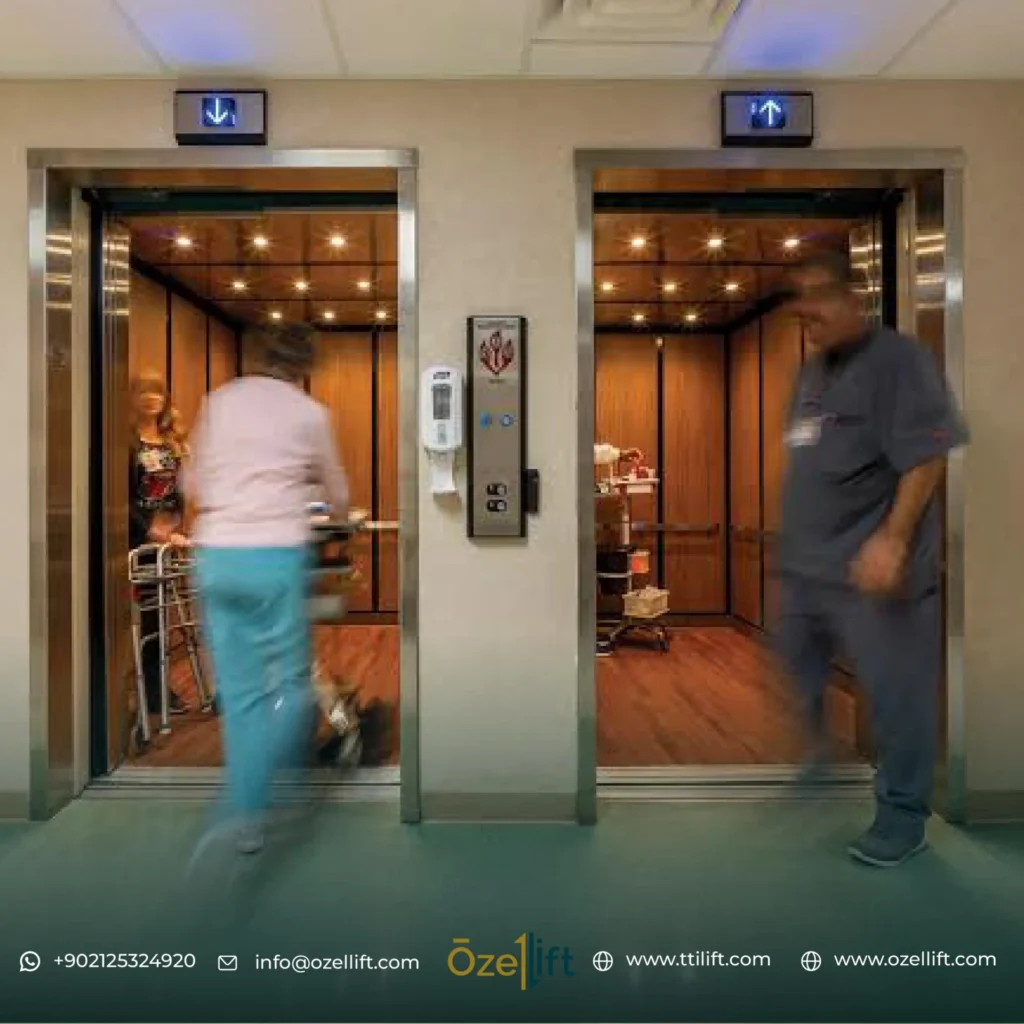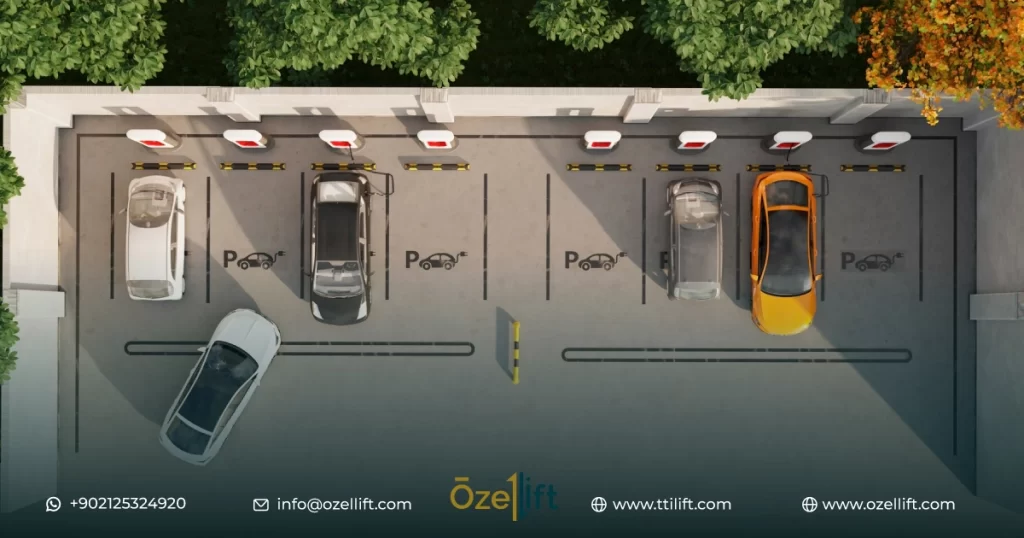What is a Traction Elevator? A traction elevator is a type of vertical transportation system that uses a traction machine to move the elevator car up and down. This technology is widely used in buildings of all sizes, from residential homes to towering skyscrapers.
Traction elevators are known for their efficiency, reliability, and versatility, making them a popular choice for both commercial and residential applications – Know more about traction elevators and its advantages in this article.
How Do Traction Elevators Work?
Traction elevators are the most common type of elevator, operating on a simple rope-and-pulley system. Here’s a breakdown:
- Motor and Sheave: A motor powers a grooved pulley called a sheave.
- Ropes and Counterweight: A steel rope is looped over the sheave, connecting the elevator car to a counterweight.
- Movement: When the elevator is called, the motor turns the sheave, causing the rope to unwind on one side and wind up on the other. This pulls the elevator up or down.
- Counterweight: The counterweight balances the elevator car’s weight, reducing the motor’s workload and improving energy efficiency.
Key Components of a Traction Elevator
A traction elevator consists of several essential components that work together to provide safe and efficient transportation. Here’s a breakdown of the key components:
- Traction Machine: This is the heart of the elevator system. It uses a motor and pulley system to create the tension needed to lift and lower the elevator car.
- Elevator Car: This is the enclosed compartment that carries passengers. It’s suspended by steel cables that are wrapped around the traction machine’s pulley.
- Counterweight: This is a heavy weight that balances the elevator car, reducing the amount of power required to move it.
- Steel Cables: These cables support the elevator car and counterweight, ensuring their safe movement.
- Guide Rails: These rails provide vertical guidance and support for the elevator car, ensuring it stays aligned during operation.
- Control System: This sophisticated system manages all aspects of the elevator’s operation, including safety features, speed control, and emergency stops.
- Hoistway: This is the vertical shaft that houses the elevator car, counterweight, and cables.
These components work in harmony to provide a smooth and reliable transportation experience – after knowing What is a Traction Elevator – lets know what about traction elevator types.
Different Types of Traction Elevators
Traction elevators can be classified into several types based on their design and function:
- Gearless Traction Elevators:
- Advantages: Higher efficiency, quieter operation, and longer lifespan.
- Disadvantages: Higher initial cost.
- Geared Traction Elevators:
- Advantages: Lower initial cost, suitable for smaller buildings.
- Disadvantages: Lower efficiency and noisier operation compared to gearless elevators.
- Machine Room Less (MRL) Traction Elevators:
- Advantages: Smaller footprint, ideal for buildings with limited space.
- Disadvantages: May have limitations in terms of speed and capacity.
- Double-Decker Traction Elevators:
- Advantages: Higher capacity, suitable for high-traffic buildings.
- Disadvantages: More complex design and higher initial cost.
- Observation Elevators:
- Advantages: Panoramic views, popular tourist attractions.
- Disadvantages: Specialized design and higher cost.
The choice of traction elevator type depends on various factors, including building size, traffic volume, desired speed, and budget.
Know more about
Home Elevator Sizes
types of elevator
What is a Traction Elevator Advantages?
Traction elevators offer several advantages that make them a popular choice for buildings of all sizes:
- Efficiency: Traction elevators are highly efficient, using less energy compared to other types of elevators.
- Reliability: They are known for their reliability and long lifespan, ensuring minimal downtime.
- Versatility: Traction elevators can be customized to meet various building requirements, from small residential homes to towering skyscrapers.
- Speed: They can achieve higher speeds compared to other elevator types, reducing waiting times.
- Safety: Traction elevators incorporate advanced safety features, such as emergency brakes and overload protection.
- Quiet Operation: Modern traction elevators are designed to be quiet, minimizing noise disturbance.
- Smooth Ride: Traction elevators provide a smooth and comfortable ride for passengers.
- Environmental Friendliness: Many traction elevators are equipped with energy-saving features, contributing to a greener environment.
These advantages make traction elevators a preferred choice for both commercial and residential buildings.
What is a Traction Elevator Disadvantages?
While traction elevators offer numerous advantages, they also have some potential drawbacks:
- Higher Initial Cost: Traction elevators typically have a higher initial cost compared to hydraulic elevators, especially for larger installations.
- Space Requirements: They require more space for the hoistway and machine room, which can be a limitation in some buildings.
- Maintenance: While traction elevators are generally reliable, they require regular maintenance to ensure optimal performance and safety.
- Noise: Although modern traction elevators are designed to be quieter, they can still generate some noise, especially in older buildings.
- Complexity: The mechanical systems involved in traction elevators can be complex and may require specialized technicians for maintenance and repairs.
- Environmental Impact: While traction elevators are becoming more energy-efficient, they still have a carbon footprint.
It’s important to consider these factors when deciding whether a traction elevator is the best choice for your specific needs.
Traction Elevators vs. Hydraulic Elevators: A Comparison
Traction elevators and hydraulic elevators are the two primary types of elevators used in buildings today. Each has its own advantages and disadvantages, making them suitable for different applications.
Traction Elevators
- How they work: Use a traction machine and steel cables to lift and lower the elevator car.
- Advantages: Higher speed, smoother ride, quieter operation, more energy-efficient, suitable for taller buildings.
- Disadvantages: Higher initial cost, require more space for the hoistway and machine room.
Hydraulic Elevators
- How they work: Use hydraulic pressure to lift the elevator car.
- Advantages: Lower initial cost, smaller footprint, suitable for lower-rise buildings.
- Disadvantages: Slower speed, less efficient, noisier operation, potential for oil leaks.
The best choice between traction and hydraulic elevators depends on several factors, including:
- Building height: Traction elevators are better suited for taller buildings, while hydraulic elevators are more suitable for lower-rise buildings.
- Traffic volume: Traction elevators are more efficient for high-traffic buildings.
- Budget: Hydraulic elevators generally have a lower initial cost.
- Space constraints: Hydraulic elevators require less space for the hoistway.
By carefully considering these factors, you can choose the most appropriate type of elevator for your specific needs.
Choosing the Right Traction Elevator for Your Needs: Ozellift Elevators
When asking What is a Traction Elevator? And considering a traction elevator for your building, Ozellift Elevators offers a wide range of options to meet your specific requirements. Here are some key factors to consider when making your selection:
Building Size and Height
- Number of floors: Determine the number of floors your elevator will need to serve.
- Building layout: Consider the building’s layout and the location of the elevator shaft.
Traffic Volume
- Expected passenger load: Estimate the number of passengers who will use the elevator daily.
- Peak hours: Identify the busiest times of day and plan accordingly.
Desired Speed
- Waiting times: Determine the acceptable waiting time for passengers.
- Travel distance: Consider the distance the elevator will need to travel between floors.
Aesthetics and Design
- Interior design: Choose an elevator design that complements your building’s overall aesthetic.
- Exterior appearance: Consider the elevator’s exterior appearance and how it will fit into the building’s facade.
Budget
- Initial cost: Determine your budget for the elevator purchase and installation.
- Maintenance costs: Factor in ongoing maintenance and repair costs.
Safety Features
- Emergency stops: Ensure the elevator is equipped with reliable emergency stop mechanisms.
- Safety devices: Look for elevators with advanced safety features, such as fire protection and overload protection.
Energy Efficiency
- Energy consumption: Consider the elevator’s energy consumption and its impact on your building’s utility costs.
Additional Features
- Accessibility: If your building serves people with disabilities, ensure the elevator complies with accessibility standards.
- Smart features: Explore options for smart elevators with features like remote monitoring and control.
Why Choose Ozellift Elevators?
Ozellift Elevators is a leading provider of traction elevators, offering a wide range of options to meet your specific needs. With our expertise and commitment to quality, we can help you select the perfect elevator for your building.
Some of the benefits of choosing Ozellift Elevators include:
- Customized solutions: We can tailor our elevators to meet your exact requirements.
- Advanced technology: Our elevators incorporate the latest technology for optimal performance and safety.
- Experienced team: Our team of experts has years of experience in the elevator industry.
- Excellent customer service: We are dedicated to providing exceptional customer service throughout the entire process.
To learn more about Ozellift Elevators and how we can help you choose the right traction elevator for your building, please contact us today.
How does a traction elevator work?
Traction elevators use a motor and pulley system to create tension in steel cables that support the elevator car. The weight of the elevator car is balanced by a counterweight, making it easier for the traction machine to move it.
What are the main components of a traction elevator?
The main components of a traction elevator include the traction machine, elevator car, counterweight, steel cables, guide rails, control system, and hoistway.
What are the different types of traction elevators?
Traction elevators can be classified into gearless, geared, MRL (machine room less), double-decker, and observation elevators.
What are the advantages of traction elevators?
Traction elevators are known for their efficiency, reliability, versatility, speed, safety, quiet operation, and smooth ride.



